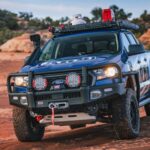Automobile Body Types are a fundamental aspect of vehicle classification, influencing design, functionality, and intended use. The National Highway Traffic Safety Administration (NHTSA) provides a standardized system for categorizing these diverse forms, essential for regulatory and statistical purposes. This guide delves into the NHTSA’s classification of vehicle body types, offering a clear understanding of the distinctions and categories recognized within the automotive industry.
The NHTSA’s classification system, primarily used from 1991 onwards, provides a numerical index to define various body styles. These range from the familiar sedan and coupe to more specialized types like utility vehicles and vans. Understanding these classifications is crucial for industry professionals, researchers, and anyone interested in the nuances of vehicle design and categorization.
Here’s a breakdown of key automobile body types as defined by the NHTSA:
Sedans, Coupes, and Hatchbacks:
These represent some of the most common passenger car body styles.
- Convertible (01): Vehicles designed with a retractable roof, excluding sunroofs or T-bars, allowing for open-air driving.
- 2-Door Sedan/Hardtop/Coupe (02): Characterized by two doors and a traditional enclosed body. Coupes often emphasize a sporty or streamlined design.
- 3-Door/2-Door Hatchback (03): These combine a sloping roofline with a rear hatch for cargo access, offering a blend of passenger and cargo utility in a two-door configuration.
- 4-Door Sedan/Hardtop (04): The quintessential passenger car, featuring four doors and a separate trunk, prioritizing passenger comfort and practicality.
- 5-Door/4-Door Hatchback (05): Similar to hatchbacks (03), but with four doors, enhancing accessibility while retaining the cargo versatility of a hatchback design.
- Sedan/Hardtop, number of doors unknown (08 – since 1994): Used when the number of doors for a sedan or hardtop body style is not specified.
Wagons and Utility Vehicles:
These categories bridge the gap between passenger cars and larger, more utility-focused vehicles.
- Station Wagon (06): Featuring an extended roofline to the rear of the vehicle, creating a larger cargo area accessible via a rear liftgate. This excludes van and truck-based wagons.
- Utility Station Wagon (16): A subcategory that further defines station wagons with specific utility-oriented features.
- Compact Utility (14): Encompasses smaller to mid-size utility vehicles, aligning with ANSI D-16 Utility Vehicle Categories “Small” and “Midsize,” often referred to as compact SUVs today.
- Large Utility (15): Larger utility vehicles, corresponding to ANSI D-16 Utility Vehicle Categories “Full Size” and “Large,” typically known as full-size SUVs.
- Utility Unknown Body (19): Used when the specific body type of a utility vehicle is unknown.
Vans and Minivans:
Designed for passenger and cargo hauling, vans come in various sizes and configurations.
- Minivan (20): Smaller vans generally designed for passenger transport, often featuring sliding doors and flexible seating arrangements.
- Large Van (21): Larger van configurations, including van-based buses, designed for substantial passenger or cargo volume.
- Step Van or Walk-In Van (22 & 60): Vans with a step-in design and often a high roof, facilitating easy access for delivery or service purposes.
- Other Van Type (Hi-Cube Van) (28): Includes specialized van types such as high-cube vans, characterized by their boxy shape maximizing cargo space.
- Unknown Van Type (29): Used when the specific van body type is not identified.
Trucks and Truck-Based Vehicles:
These are typically larger, more robust vehicles designed for hauling and commercial applications.
- Auto-Based Pickup (10): Pickup trucks built on an automobile chassis rather than a dedicated truck chassis.
- Auto-Based Panel (11): Panel vans constructed on an automobile chassis, often used as cargo station wagons or auto-based ambulances and hearses.
- Compact Pickup (30): Smaller pickup trucks, differentiated by Gross Vehicle Weight Rating (GVWR). (Note: GVWR incomplete in source text).
- Medium/Heavy Pickup (67): Pickup trucks with a GVWR exceeding 10,000 lbs (since 2001), categorized as heavier-duty trucks.
- Cab Chassis-Based (40): Vehicles built on a cab chassis, including light stake trucks, light dump trucks, light tow trucks, and rescue vehicles.
- Truck-Based Panel (41): Panel trucks built on a truck chassis.
- Light-Truck-Based motorhome (42): Motorhomes built on a light truck chassis (chassis mounted).
- Medium/Heavy Truck-Based Motorhome (65): Larger motorhomes built on medium or heavy truck chassis.
- Single-Unit Straight Truck (61 & 64): Trucks with all axles attached to a single frame. (61: 10,000 – 26,000 lbs GVWR, 64: GVWR unknown).
- Truck/Tractor (66): Tractor trucks, designed to pull trailers and other trailing units, regardless of weight.
- Other Light Conventional Truck Type (45): Includes various light truck types, including stretched suburban limousines.
- Unknown Light Truck Type (48): Used when the specific type of light truck (excluding pickups) is unknown.
- Unknown Medium/Heavy Truck Type (78): Used when the specific type of medium/heavy truck is unknown.
- Unknown Truck Type (79): General category for unidentified truck types.
Buses:
Vehicles designed for transporting large numbers of passengers.
- Cross-Country/Intercity Bus (51): Buses designed for long-distance travel (e.g., Greyhound).
- Transit Bus (52): Buses designed for city or local transportation.
- Van-Based School Bus & Transit Bus (24 & 25): School and transit buses built on van chassis (1993-2002 only).
- Other Bus Type (58): Includes other bus configurations not specifically listed.
- Unknown Bus Type (59): Used when the bus body type is not identified.
Other and Unknown Types:
This category includes less conventional vehicles and classifications for unknown types.
- Auto-Based Pickup (10): Pickup trucks based on an automobile platform.
- Large Limousine (12): Limousines with more than four side doors or a stretched chassis, denoting extended length and luxury.
- Three-Wheel Automobile or Automobile Derivative (13): Three-wheeled vehicles classified as automobiles or derived from automobile designs.
- Utility Unknown Body (19): Unidentified utility vehicle body type.
- Unknown auto type (09 – 1991-1993), Other or Unknown automobile type (09 – since 1994): Categories for unknown or other automobile body types, with a distinction based on the date range.
- Unknown Light Vehicle Type (49): General category for unidentified light vehicles (automobile, utility vehicle, van, or light truck).
- Unknown Body Type (99): A general classification for any vehicle with an unknown body type.
Motorcycles and Other Cycles:
These categories cover two and three-wheeled motorized vehicles.
- Motorcycle (80): Standard two-wheeled motorcycles.
- Moped (81): Motorized bicycles or mopeds.
- Three-Wheel Motorcycle/Moped (82): Three-wheeled motorcycles and mopeds, excluding all-terrain vehicles.
- Off-Road Motorcycle (83): Two-wheeled motorcycles designed for off-road use (since 1993).
- Other Motored Cycle Type (88): Includes mini-bikes and motor scooters.
- Unknown Motored Cycle Type (89): Used when the specific type of motored cycle is unknown.
Specialty Vehicles:
This includes vehicles for specific purposes or unique categories.
- ATV (all-terrain vehicle) (90): All-terrain vehicles, including those with 3 or 4 wheels.
- Snowmobile (91): Vehicles designed for snow travel.
- Farm Equipment Other Than Trucks (92): Farm equipment not classified as trucks.
- Construction Equipment Other Than Trucks (93): Construction equipment excluding trucks, including graders.
- Motorized Wheel Chair (94): Motorized wheelchairs (since 1997).
- Other Vehicle Type (97): A broad category including go-carts, forklifts, city street sweepers, dune/swamp buggies, and golf carts.
- Camper or Motorhome, Unknown Truck Type (73): Campers or motorhomes where the truck type is not specified.
- Unknown if single-unit or combination unit Medium Truck (71): Used when it’s unclear if a medium truck is a single unit or combination unit.
Understanding the NHTSA’s automobile body type classification is essential for accurately categorizing vehicles for statistical analysis, regulatory compliance, and a deeper comprehension of the automotive landscape. This detailed system provides a valuable framework for differentiating the vast array of vehicle designs on the road today.

